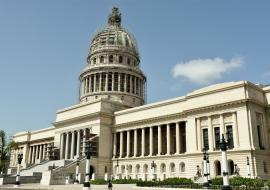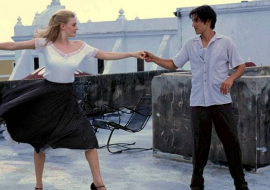Havana 500: The Time of the Cuban Capital Has Come

On July 4, 2019, there will be exactly 500 days left for Havana to turn 500 years since its foundation.
For this reason, the Palace of the Captains General in Old Havana, where the Office of the Historian of the city is based, hosted this Thursday a press conference in which local authorities officially launched the campaign to celebrate half a millennium of the capital city.
Years after Havana won the status of Wonder City of the World, members of the national and foreign press media invited received extensive information on the stages of the festivities, the official brand and the slogan that will preside over all the days until the November 16, 2019.
Rubén Vidaud, director of institutional communication of the Provincial Administrative Council of Havana; Tatiana Viera Hernández, vice president of the Provincial Assembly of People’s Power in Havana, and Dr. Eusebio Leal Spengler, historian of the city, called for a chance to make this celebration something more than a simple anniversary.
“This is a campaign that will accompany the Government Plan that is already underway and whose fundamental objective is to work out the problems of the capital, several of them piled up for years. That is why the campaign will stretch out over time, beyond November 16, 2019, when Havana reaches its first 500 years of existence,” said Tatiana Viera Hernandez in her initial speech.
According to the local official, the government plan is aimed at reversing the constructive state of housing in the Cuban capital by applying all possible alternatives. Likewise, the plan includes the creation of spaces for recreation and enjoyment for the population, as well as the rekindling of green and ecological areas.
The campaign for the 500th anniversary of Havana will move, according to the vice president of the Provincial Assembly of People’s Power, in three specific areas: investments, repairs and maintenance, all in order to revive the city, so that “we can put all the aspirations of its people in the foreground and start giving solutions to each and every of them as the campaign progresses,” said Viera Hernandez.
The campaign is conceived in three work stages without having a break in time. The first stage will run from June 1 to November 16, 2018, on the 499th anniversary of Havana, and in which emphasis will be placed on showing the city as both “real and wonderful”.
The second phase spans for 365 days, from November 16, 2018 to November 16, 2019, the year of Havana’s 500th anniversary. The third stage kicks off on November 16, 2019 and hereinafter will stress on fact that the work to transform Havana was not truncated in the celebration of the 500th anniversary.
To wrap things up during the press conference, Dr. Eusebio Leal Spengler, historian of Havana and curator for almost 60 years of all the historical and cultural heritage that surrounds this Wonder City, took the floor.
With his characteristic eloquence, Dr. Leal embraced the launch of the campaign not just as a goal, but as an opportunity, since what will be done from now onward would be in the best interest of events and developments to come.
“Havana today is more democratic because it is more representative of the entire nation. It is the capital, therefore, the capita, the head. It is a superior among equals. Havana is the repository of a tradition that we all saw with our very eyes,” said Eusebio Leal in his closing remarks to the presentation of the campaign.
“Havana is the city of teachers, of those who went out to fulfill the mission of the literacy campaign and returned with the most precious prize in their hands. It is the city, moreover, of music, of poetry, of literature, of circles of thought, the city that does not have to be ashamed of anything. It is the city that saw the birth of thought,” said the city historian.
The city of San Cristobal de La Habana was founded on November 16, 1519. Its historic center, which prides itself on being one of the best preserved in the entire American continent, was declared World Heritage by UNESCO in 1982.














